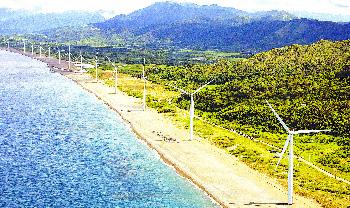
3 minute read
Empowering women to lift global output
ROME—Tackling gender inequalities in agri-food systems and empowering women reduce hunger, boost the economy and reinforces resilience to shocks like climate change and the COVID-19 pandemic, a new report by the Food and Agriculture Organization of the United Nations (FAO) shows.
The status of women in agrifood systems report, the first of its kind since 2010, goes beyond agriculture to provide a comprehensive picture of the status of women working across agri-food systems—from production to distribution and consumption. The report stresses that globally, 36 per cent of working women are employed in agri-food systems, along with 38 per cent of working men. However, women’s roles tend to be marginalized and their working conditions are likely to be worse than men’s—irregular, informal, part-time, low-skilled, or labor-intensive. Likewise, women engaged in wage employment in agriculture earn 82 cents for every dollar that men earn. Women also have less secure tenure over land, less access to credit and training and have to work with technology designed for men. Along with discrimination, these inequalities create a 24-percent gender gap in productivity between women and men farmers on farms of equal size.
shifting to more sustainable business models to just transition agreements in Spain where coal-fired power plants are being replaced by wind farms and photovoltaic plants.
The report finds that including training and skill-development initiatives in national climate action plans and electricity roadmaps can create equitable and long-lasting energy policies.
The report highlights the Marshall Islands’ Island Eco initiative, which provides technical training to women to assemble, install, operate, and maintain solar-powered equipment, helping the country achieve its goal of 100 per cent renewable energy by 2050. The initiative is also contributing to the creation of decent work conditions in the country.

In Denmark, a former shipyard has been transformed into an industrial park, housing 100 different companies in the renewable energy sector. More than 3,000 workers lost their jobs when the shipyard closed in 2012.
In the immediate aftermath of the decision to close the shipyard in 2009, a public-private partnership, Lindø Offshore Renewables Center, was established to transform the site into an industrial park for the wind and renewable energy industry. Today, more than 2,500 people are employed across the 100 companies operating on the Lindø site, and an additional 3,000 people are employed in local industry and hospitality supporting the site. The report underscores that there is no ‘one size fits all’ approach when it comes to just transition. Just transition strategies must be tailored to each individual country.
In Nigeria, for example, just transition needs to be seen through the lens of adapting to the impacts of climate change. Roughly 70 per cent of Nigerians work in farming or fishing. But the country is facing steep declines in agricultural productivity due to extreme weather events and more frequent and severe drought. There is widespread recognition that new jobs and methods of production are needed.
In 2018, the Nigeria Labor Congress launched a joint project with Friends of the Earth Nigeria on just transition in two sectors—agriculture and petroleum. The project has two goals: build a shared understanding and political agenda between Nigerian trade unions, civil society and communities regarding what a just transition would look like for these two sectors in Nigeria; and develop models and best practices for other unions.
UN Climate Change News
Notably, the study underscores that agri-food systems are a more important source of livelihood for women than for men in many countries. For instance, in sub-Saharan Africa 66 per cent of women’s employment is in the sector, compared with 60 per cent of men. In southern Asia, women overwhelmingly work in agri-food systems (71 per cent of women, versus 47 per cent of men), although fewer women than men are in the labour force.
Socioeconomic benefits
“If we tackle the gender inequalities endemic in agri-food systems and empower women, the world will take a leap forward in addressing the goals of ending poverty and creating a world free from hunger”, says FAO DirectorGeneral QU Dongyu in the foreword of the report.
The study explains that closing the gender gap in farm productivity and the wage gap in agricultural employment would increase global gross domestic product by nearly $1 trillion and reduce the number of food-insecure people by 45 million. FAO News




